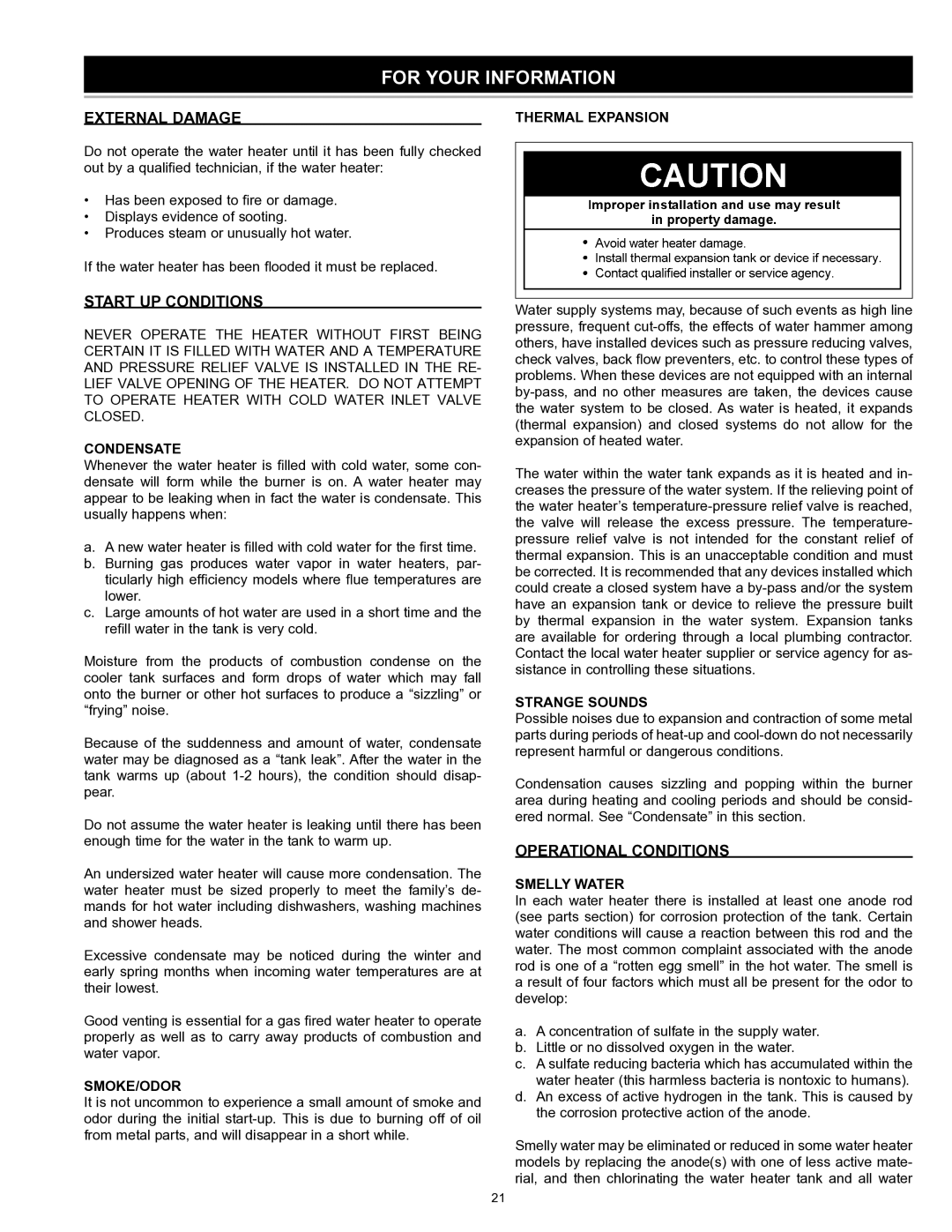GDV, GDVT specifications
A.O. Smith is a well-known name in the water heating industry, and its GDVT and GDV series of water heaters exemplify the company's commitment to quality, efficiency, and innovation. These models are designed to provide reliable hot water solutions for both residential and commercial needs, seamlessly integrating advanced technology and user-friendly features.One of the main features of the GDVT and GDV series is their high energy efficiency ratings. These water heaters utilize advanced insulation and energy-saving technologies, allowing them to achieve impressive efficiency levels. The GDVT series, for instance, can achieve an Energy Factor (EF) rating of up to 0.96, making it an environmentally friendly choice that can significantly reduce energy bills. This high level of efficiency is a result of thoughtful engineering, including a highly insulated tank that minimizes heat loss.
Another standout characteristic of the GDVT and GDV series is their compact design. These models are built to fit into tight spaces, making them ideal for homes or businesses with limited installation areas. Despite their compact size, they maintain a large storage capacity, ensuring that users have access to consistent hot water. The GDVT series is particularly known for its vertical design, which allows for easy installation in smaller utility rooms or closets.
The GDV models feature a robust digital display that provides real-time information about the water heater's operation. Users can easily monitor the unit’s performance and make adjustments as needed. Additionally, these models come equipped with advanced safety features, including a built-in safety shut-off system and over-temperature protection, ensuring safe and reliable operation.
Both the GDVT and GDV series utilize A.O. Smith's innovative HydroJet® technology, which minimizes sediment buildup within the tank. This technology involves the strategic placement of an internal dip tube that maximizes water circulation, helping to extend the life of the water heater and maintain optimal performance over the years.
In summary, the A.O. Smith GDVT and GDV series water heaters are an excellent choice for those seeking a balance of efficiency, compact design, advanced technology, and enhanced safety. With their impressive energy ratings, user-friendly features, and cutting-edge technologies, these units are tailored to meet the demands of modern residential and commercial water heating solutions, ensuring a consistent supply of hot water while minimizing environmental impact.

